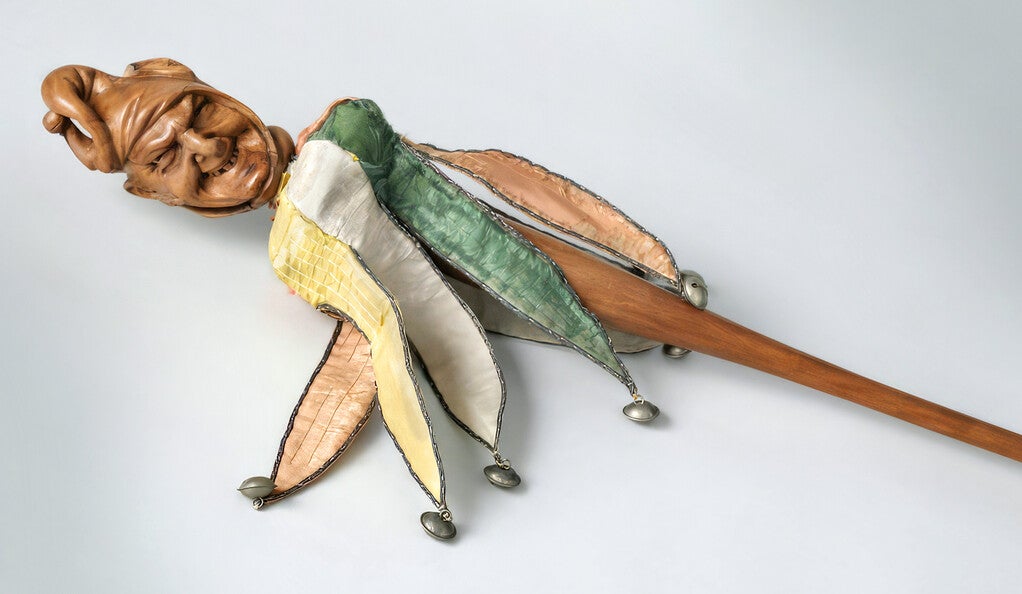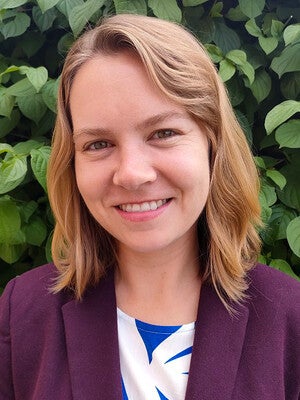Office Hours with… Nicole Sheriko

Marotte (Courtesy of the Louvre Museum)
As a postdoctoral research fellow at the University of Cambridge, Nicole Sheriko had access to vast archives relevant to her specialty: early English puppetry. But not all the puppet treasure was on campus.

Occasionally Sheriko would explore the rural museums in the outlying towns of East Anglia, where she’d sometimes find old puppets that had once figured prominently in some sort of traditional civic performance or procession. “I would never have been able to justify traveling from the U.S. to see these places,” said Sheriko, “but while I was there, I absolutely wanted to go and crawl around in an old warehouse looking for dragon puppets.”
Today Sheriko is an assistant professor of English in Yale’s Faculty of Arts and Sciences where she is working on a book about early English puppetry.
In the latest edition of Office Hours, a Q&A series that introduces new Yale faculty members to the broader community, Sheriko discusses her lifelong affection for puppets, the varying styles of early puppets, and how her interest in old ways isn’t limited to puppets.
How did you become interested in early English puppetry?
Nicole Sheriko: There are two answers to that question. The scholarly answer is that as an undergrad I read this play by one of Shakespeare’s contemporaries, Ben Jonson, called “Bartholomew Fair,” which documents the most famous puppet show that survives from early modern England. There is this incredible moment when a puppet tries to prove that he can’t be a crossdresser: He picks up his clothes to sort of flash the audience and show his lack of genitalia to prove that he has no gender and therefore cannot be a crossdresser. It’s just this transcendently bizarre, hilarious moment. It became the subject of one of the first articles I published.
The non-scholarly answer to that question is I just grew up around a lot of puppets, whether it was watching stop-motion animation or great Ray Harryhausen monsters with my dad, or Star Wars and seeing puppet Yoda played by Frank Oz and thinking about the connections to “The Muppet Show.” I’ve always had a great affection for puppets.
Do many puppets survive from the early English era?
Sheriko: Not many. If you’ve ever seen any kind of puppet show, you know there’s a lot of slapstick: One of the great things about puppets is that they can do things that humans can’t — including absorb a ton of violence. So they physically break down. That said, there are a few that have survived. Anything from a royal household had a slightly higher chance of surviving. The ones that do survive, they were carried by court jesters — it’s a scepter with a carved head on it.
Tell me about your book on puppetry.
Sheriko: It’s called “Lively Things: Puppet Performance and Early English Theatricality.” It’s basically the first book to chart and reconstruct what early English puppetry looked like. Each chapter will take up a different type of puppet. Some are the more familiar ones, like little glove puppets or rod puppets on a stick. Some are more surprising — animal skins being used as forms of body puppetry, 12-foot-long dragons that are used in street processions as part of civic theater.
By reconstructing these different types of puppetry I’ll give a broader sense of what early English theater looked like and how early moderns were thinking about the liveliness and animacy of objects.
What other aspects of performance are you studying?
Sheriko: I work a lot on the history of comedy, comic performance, and stage clowning, which is really about embodied performance and improvised performance. A lot of the work that I do is trying to reconstruct what performance looked like outside of the surviving texts. Everything that’s in the margins, everything that’s between the lines, what did people do with their bodies, how did they improvise.
What are some of your other outside interests?
Sheriko: For a while I was interested in doing historical baking. I would find old recipes and try to recreate them. It’s a fun way to combine an interest in baking with historical research.
I also bike the two miles from Westville to work every day, even in the cold. It’s practical and feels more convenient than driving or taking a bus. In Cambridge, so many people bike that they have a three-story parking garage just for bikes at the train station.
Media Contact
Allison Bensinger: allison.bensinger@yale.edu,